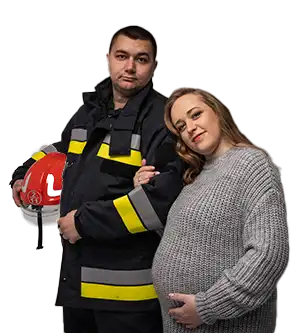
Non-Occupational AFFF Foam Exposes Firefighter Family Members To Cancer Risk
Firefighting foam's PFAS compounds can stick to gear and clothing, raising secondhand exposure hazards for children and spouses living at home
Friday, May 23, 2025 - On the job, firefighters routinely come into contact with dangerous chemicals; nonetheless, mounting data points point to the danger perhaps following them home. Long employed to stifle fuel fires, aqueous film-forming foam (AFFF) contains per- and polyfluoroalkyl compounds (PFAS)--persistent chemicals now related to many malignancies and immune system disorders. Although the occupational hazards of PFAS exposure are well known, public health professionals and academics are focusing on non-occupational exposure: how PFAS might find its way from fire sites into homes via contaminated gear, boots, gloves, and clothing? Once within, these toxins can gather in dust, stick to clothes, or settle in places where family members or youngsters might unintentionally come into touch. Children who play in cars used by firefighters or spouses who wash firefighting uniforms could be repeatedly exposed to low-level exposure. Some families have been compelled by this growing issue to seek advice from an AFFF cancer attorney, particularly in cases when family members become sick with possible PFAS ties. Increasingly, AFFF cancer lawsuit filings point to secondhand contamination sources, therefore extending the legal and medical definition of who is regarded as an "exposed" person. The National Institute for Occupational Safety and Health (NIOSH) claims that PFAS residues can remain long after active usage ends and without appropriate storage and cleaning processes, those residues may remain a continuous concern at home. Firefighter gear can retain those residues.
Though additional study is required, early results show that secondhand exposure through contaminated gear could be a significant factor in PFAS accumulation in home settings. Studies of homes including firefighters have shown more PFAS in dust samples than in control homes. For families, especially those with small children or those with pre-existing medical disorders, these results have created concerns. Known for their potential to build up over time, linger in the body, and disrupt hormones, immunity, and organ function, PFAS can also The most alarming feature is that this type of exposure is often unnoticed and forced, happening just because protective gear is kept in family cars or uniforms are laundered next to regular clothing. Notwithstanding these hazards, there are not yet national policies mandating fire services to offer at-home decontamination supplies or storage options. Often uninformed of the possible effects on their loved ones, many firemen are left to handle contaminated equipment on their own. Legal and medical groups are advocating for broadened definitions of PFAS exposure victims to include those indirectly impacted as this problem is more well-known. Claims from spouses and children who suffer health problems following years of environmental interaction through contaminated gear may likely find a place in AFFF cancer litigation. Within the firefighting community, this widening perspective could change public health recommendations, legal responsibility, and family safety policies.
Looking ahead, the awareness of secondhand PFAS exposure hazards could inspire a major transformation in the way legislators and fire departments handle family safety. To stop contamination from outside the firehouse, departments could tighten rules on gear storage, laundry practices, and car use. Legal systems could change to hold companies responsible not only for direct occupational exposure but also for the wider hazards carried home to family members.
 OnderLaw, LLC and The Overholt Law Firm, PC -
OnderLaw, LLC and The Overholt Law Firm, PC -